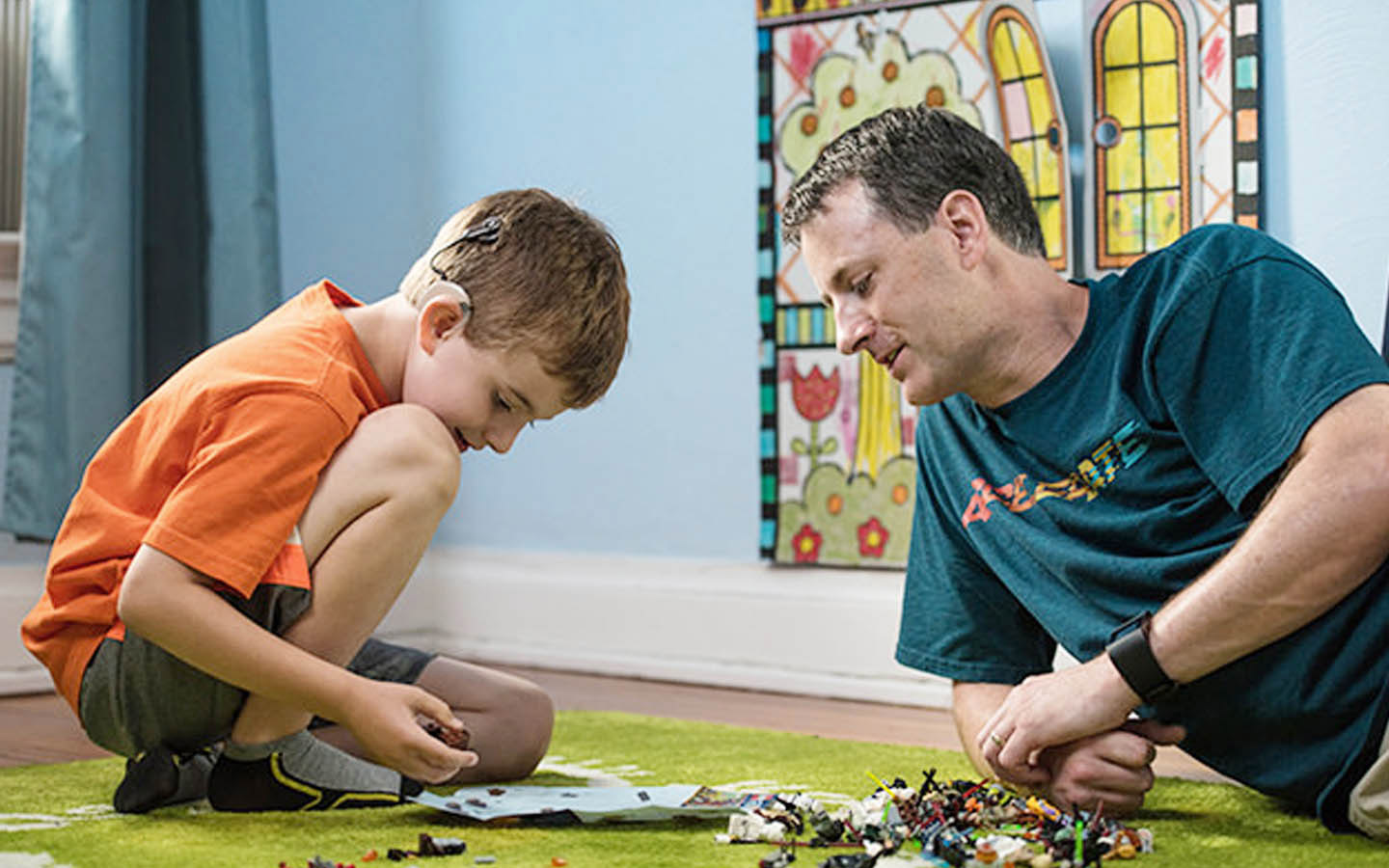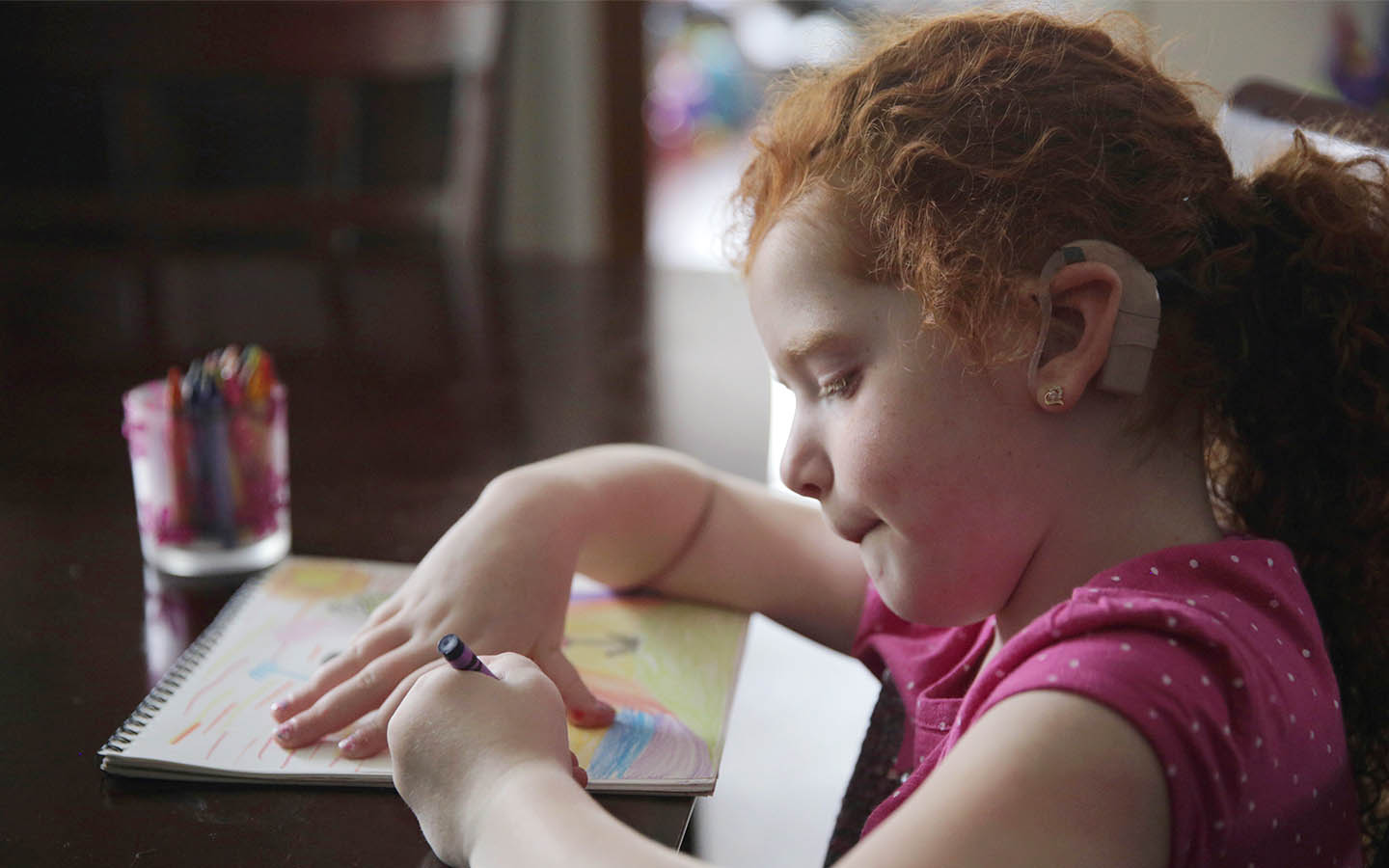If your child has hearing loss
Have you been told your child may have hearing loss? There are effective solutions to help them.

What you'll find on this page
- What you can do if your child has hearing loss
- How to connect with others who have been where you are
- How to get support so you know that you’re not alone
If you have been told your baby or child has hearing loss, you may be feeling a range of emotions. That’s normal. In fact, there is no right or wrong way to feel, so give yourself time and draw on the love and support of family and friends to help you.
"What did you first think when you learned I was deaf?" asks ten-year-old Zoe to her mom, Mia. The two talk about the journey below.
“We learned Zoe was profoundly deaf, we were worried about her future and what that was going to look like. And now I have no worries about her future.”
- Mia, Mother of Zoe – Nucleus® recipient
Hope for children with hearing loss
With the right solution, children with hearing loss are able to enjoy a life full of sounds, speech, laughter and music. Even children born profoundly deaf may be able to confidently learn at a mainstream school, engage in all kinds of activities, dance along to their favorite songs and hear you say, “I love you.”
Exploring the options for your child is the first step to achieving their best possible outcome. Be confident that you will make the best decision, because no one loves your child like you do.
You are not alone
Over 34 million children worldwide have hearing loss.1 To find out more, read 10 facts about deafness by the World Health Organization.
What can I do if my child has hearing loss?
Cochlear offers a range of hearing solutions that have helped children around the world for almost 40 years. We can provide information for you to use right now. And, when you’re ready, we can put you in touch with other parents who have been in your place.
If your child has moderate to profound sensorineural hearing loss in one or both ears, and hearing aids are not providing enough benefit, then cochlear implants may help.
Bone conduction solutions could be an option for your child if they have conductive hearing loss, mixed hearing loss or single-sided deafness.
If your child has been diagnosed with hearing loss or if you think your child has hearing loss its important to have their hearing tested by a hearing health professional who specializes in all types of hearing technology, including implantable hearing solutions. They will be able to advise if your child may benefit from hearing technology including hearing implant solutions.
Find a Hearing Implant Specialist near you
Disclaimer
Please seek advice from your health professional about treatments for hearing loss. Outcomes may vary, and your health professional will advise you about the factors which could affect your outcome. Always read the instructions for use. Not all products are available in all countries. Please contact your local Cochlear representative for product information.
Views expressed are those of the individual. Consult your health professional to determine if you are a candidate for Cochlear technology.
For a full list of Cochlear’s trademarks, please visit our Terms of Use page.
References
- World Health Organization, ‘10 facts about deafness’, http://www.who.int/features/factfiles/deafness/en/ (accessed March 2018)






